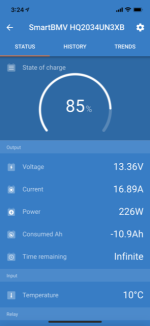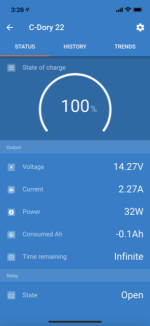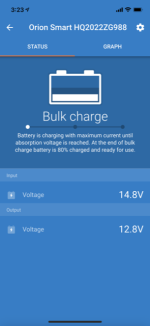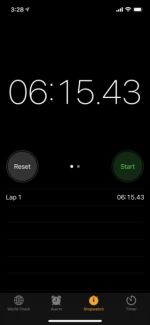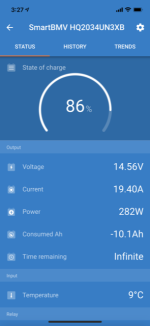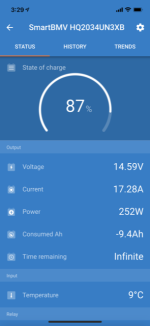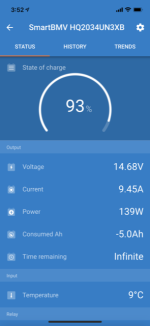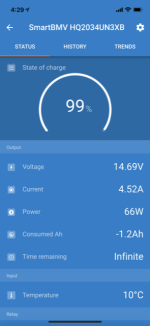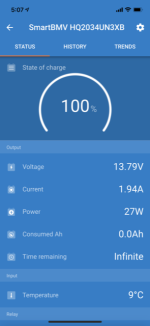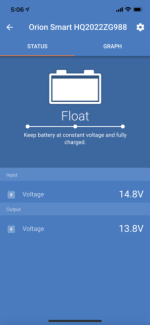jkidd
Active member
- Joined
- Oct 23, 2006
- Messages
- 1,681
- Reaction score
- 5
- C Dory Year
- 2007
- C Dory Model
- 22 Cruiser
- Hull Identification Number
- CDo22670C707
- Vessel Name
- Voyager
thataway":i8ov21ou said:Jody, Sounds like a well designed and valid experiment. You mentioned you were going to monitor the heat of the "charging coils". Hopefully this will be easy to do. I believe it is essential in the experiment.
The start requirement for the Suzuki 115 is 512 amps CCA. The usual start current draw for this engine max Is in the 150 amp range. I believe the shunt should handle this easily. You could put the clamp on meter over the start cable and see what it draws.
Another depth to the experiment--and it may put more load on the outboard charging circuit, is to draw down the starting battery to 50% (resting voltage of 12.2) and then measure current from outboard charger circuit with and without the DC to DC charger.
I suspect that the start battery acts as sort of a "buffer" for the outboard charging circuit, if the Victorn acts like the Sterling which I have.
.
Well the charge coil is under a cast iron fly wheel, but if I stop the motor I should be able to get a temperature from the bottom. I went hunting for all my clamp on meters and there all AC. I do have a couple of shunts laying around and with the blue tooth dongle will give me more info faster by just being able to do a screen shot.
Normally my start battery wouldn't be discharged as it only starts the motor and is used for the bilge pump. I could see that it might be good information to know how things might react under those conditions so I think I'll give it a try.
I think your right about the battery buffering what is going on, the test should prove that or I'll have to switch to the 18 amp DC to DC charger.


